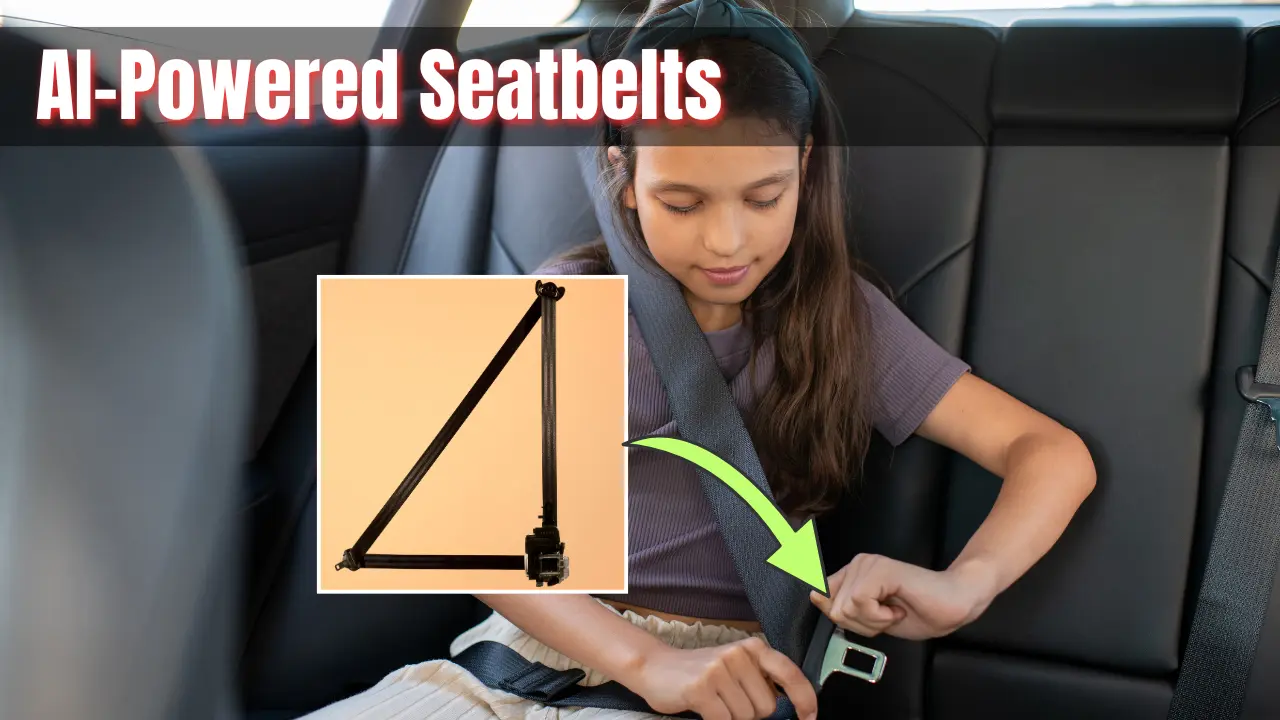Volvo’s legendary safety game just levelled up—again. The Swedish carmaker has revealed a world-first seatbelt that instantly adapts to your body and crash conditions, debuting in the upcoming EX60 electric SUV. The promise? Smarter, more personalised protection for every passenger, every time.
If you thought seatbelts were a solved problem, Volvo’s new “multi-adaptive” safety belt is here to prove otherwise. Launching in the EX60 in 2026, this tech doesn’t just strap you in—it reads the room (and your body) in real time. Why does this matter? Because one-size-fits-all safety is out, and data-driven, person-specific protection is in. For Indian buyers eyeing the next big thing in car safety, this is a peek into the future.
Design
The new seatbelt looks familiar at first glance—still a three-point harness, still classic Volvo minimalism. But beneath that fabric is a brainy bundle of sensors and microprocessors. The system taps into real-time data from both inside and outside the car, analysing everything from your height and weight to your seating position and even the direction of an impending crash. It’s like having a tailor and a bodyguard, both working overtime, every time you buckle up.
Interior Integration
Inside the EX60, the multi-adaptive belt works seamlessly with Volvo’s broader safety ecosystem. Occupant detection sensors, airbags, and driver assistance systems all talk to each other, ensuring the belt’s response is perfectly in sync with the rest of the car’s safety tech. Whether you’re tall, short, slouching, or sitting upright, the system adjusts without you even noticing.
Read Also: Tata Safari and Harrier Getting Major Engine Upgrades in 2026 – Check Details
Features
Here’s where things get clever. Traditional seatbelts use three “load limiter” profiles to control the force on your body during a crash. Volvo’s new tech? Eleven profiles—yes, eleven! That means the belt can instantly select the right amount of restraint for your body type and the severity of the collision. Big, heavy-set passenger in a high-speed crash? The belt tightens up to reduce head injury risk. Petite occupant in a minor bump? Softer restraint to avoid rib fractures. All of this happens in less than a blink—milliseconds, literally.
The system is also future-proof. Thanks to over-the-air software updates, Volvo can keep refining how the belt responds as more real-world crash data rolls in. It’s a safety feature that gets smarter every year.
Safety
Volvo’s safety legacy is legendary—they invented the three-point belt back in 1959. Now, with a database of over 80,000 real-world crash cases, they’re teaching their cars to protect people even better. The multi-adaptive belt is designed to reduce both head injuries and belt-related torso injuries, customising its response for every occupant, every time. It’s not just about surviving a crash—it’s about walking away with fewer injuries.
Price and Availability
The first car to feature this tech will be the all-electric Volvo EX60, set to hit global markets in 2026. While pricing for India isn’t out yet, expect the EX60 to carry a premium over current models, given its next-level safety suite. As Volvo expands its EV line-up in India, this tech could soon become the new gold standard for seatbelt safety here.
